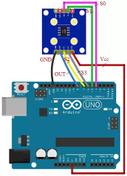RGB Display Interface: Pros and Cons
Advertisement
This page explores the pros and cons of the RGB display interface.
Introduction
Various common display interfaces exist for image transfer, including LVDS, RGB, MIPI, Vx1, and eDP. This section focuses on RGB interface basics, its signals, its merits, and its demerits.
What is RGB Display Interface?
Most LCD displays support the parallel RGB interface. This interface facilitates communication between the graphic controller and the display module. It uses basic timing signals such as VSYNC, HSYNC, R0 to R7, G0 to G7, B0 to B7, and DCLK.
Each line in the RGB interface transmits one bit of information, which determines the intensity of the RGB color of a particular pixel. The 24-bit RGB variant requires 24 wires for every pixel transferred.

- VSYNC (Vertical Synchronization Signal): Synchronizes data for columns of pixels on the display. It resets a new frame.
- HSYNC (Horizontal Synchronization Signal): Synchronizes data for rows of pixels on the display. It resets the LCD to the next line or row.
- R0 (LSB) to R7 (MSB) for red data, G0 (LSB) to G7 (MSB) for Green data, B0 to B7 for Blue data: Includes a separate line for each bit of information.
- DCLK: Clock for input data.
- DE: Data enable to confirm data transfer accuracy.
Advantages of RGB Interface
Following are the benefits of using the RGB interface:
- It supports small to medium-sized displays without controllers. Common sizes supported are 3.5 inch, 4.3 inch, and 5 inch.
- It offers high performance, with bandwidth up to 1.2 GB per second.
Disadvantages of RGB Interface
The RGB interface also has its drawbacks:
- RGB is not differential, making the signal susceptible to noise disturbance.
- Transfer speed is limited due to its non-differential nature.
- The RGB interface does not support larger screen sizes, such as 10-inch and 12-inch displays.
- It supports very low resolution and smaller screen sizes.
Refer to the advantages and disadvantages of the following interface protocols: Vx1, UART, SPI, I2C, I2S, Serial interface, Parallel interface.
Advertisement
 RF
RF






